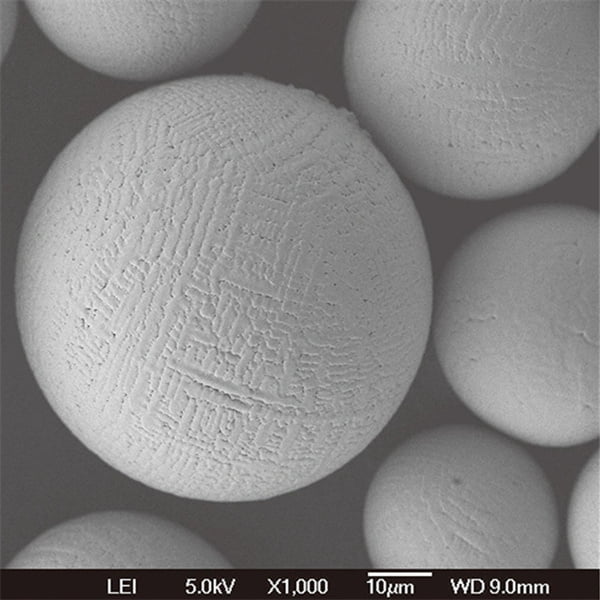Návrh designu 3D modelu
Obsah
Imagine conjuring objects from thin air, breathing life into ideas with digital clay. That’s the magic of 3D model design, a process that transcends mere technicality to become a creative dance between imagination and software. Whether you’re a seasoned designer or a curious newcomer, this guide delves into the fascinating world of 3D modeling, equipping you with the knowledge to bring your visions to stunning reality.
Determine Design Objectives: Setting the Stage for Success
Every great creation starts with a clear vision. In 3D modeling, this translates to defining your design objectives. Are you crafting a 3D-printed prototype for a new invention? Building intricate environments for video games? Or perhaps you’re designing photorealistic furniture models for an online store. Each goal demands a tailored approach.
For functional prototypes, prioritize accuracy and printability. Conversely, game environments might emphasize aesthetics and animation compatibility. Identifying your purpose early on guides your software selection, modeling techniques, and final output format.
Přemýšlejte o tom takto: You wouldn’t use a paintbrush to build a house, or a hammer to sculpt a masterpiece. Defining your design objectives is like choosing the right tools for the job in the digital realm.

Choose the Appropriate 3D modelování Software
The vast landscape of 3D modeling software can be daunting. But fear not, intrepid designer! Here’s a breakdown of some popular options, each catering to specific needs:
- Autodesk Maya: Renowned for its animation capabilities and visual effects prowess, Maya is a powerhouse often used in film, television, and game development. It boasts a steep learning curve but offers unparalleled control and flexibility for complex models.
- Blender: An open-source, free-to-use alternative, Blender is a fantastic all-rounder. It excels in both 3D modeling and animation, making it a budget-friendly choice for hobbyists and professionals alike. However, its interface might feel less intuitive compared to commercial software.
- ZBrush: This sculpting-focused software is ideal for creating organic shapes like characters, creatures, and natural objects. Imagine it as digital sculpting clay, allowing you to intuitively mold and refine intricate details.
- SketchUp: A user-friendly and intuitive option, SketchUp is perfect for beginners or projects that prioritize rapid prototyping. It excels at creating architectural models and basic 3D shapes, making it a great entry point into the world of 3D design.
The key is to find software that aligns with your skill level, project goals, and budget. Remember, the best software is the one that empowers you to create most effectively. Don’t be afraid to experiment and try out demos before committing.
Provést 3D modelování
Now, the exciting part begins: actually constructing your 3D model! Most software utilizes a combination of basic shapes like primitives (spheres, cubes, cylinders) and advanced tools for sculpting, manipulating, and refining your creation. Here’s a simplified breakdown of the process:
- Building the Foundation: Start with basic shapes to represent the core structure of your model. Think of it as sketching the skeleton of your 3D object.
- Refining the Form: Utilize sculpting tools to add details, smooth surfaces, and refine the overall shape. Imagine meticulously carving details from a block of digital marble.
- Adding Texture and Detail: Enhance your model’s realism by applying textures like wood grain, fabric patterns, or metal finishes. Think of it as dressing your digital creation – the textures bring it to life!
- Animation and Rigging (Optional): If your project requires animation, you’ll need to create a “rig” – a digital skeleton that allows you to pose and animate your model. Imagine building a puppet control system for your 3D creation.
Remember, practice makes perfect! The more you work with your chosen software, the more comfortable and efficient you’ll become at crafting intricate and stunning 3D models.
Add Materials and Textures: Bringing Your Model to Life
While a perfectly sculpted model is impressive, it’s the addition of materials and textures that truly elevates it to a whole new level. Textures add visual depth and realism, making your 3D creations look and feel like their real-world counterparts. Imagine the difference between a plain white statue and one meticulously painted with realistic details.
Most 3D modeling software provides extensive texture libraries and material editing tools. Here are some key aspects to consider.
Key Points to Pay Attention to in 3D model Design: Maintaining Quality and Efficiency
While the creative freedom in 3D modeling is exhilarating, there are some crucial technical aspects to keep in mind to ensure a high-quality, efficient workflow. Here are some essential pointers:
- Polygon Count: A 3D model is essentially made up of tiny geometric shapes called polygons. While a higher polygon count allows for intricate details, it also increases file size and rendering times. Striking a balance between detail and efficiency is key. Optimize your model by focusing detail on crucial areas and using lower polygon counts for less prominent sections.
- Topology: Imagine the underlying structure of your model as its “bones.” Good topology ensures smooth deformations and prevents visual artifacts during animation or posing. Plan your modeling process with topology in mind, using techniques like proper edge flow to maintain a clean and efficient structure.
- UV Mapping: This process involves unwrapping your 3D model onto a 2D plane, like flattening a globe onto a map. Textures are then applied onto this 2D “map” and wrapped back onto the model. Proper UV unwrapping ensures textures appear seamless and avoid distortions.
- Lighting and Rendering: The final presentation of your 3D model hinges on lighting and rendering. Lighting sets the mood and highlights key features, while rendering translates the 3D data into a final, realistic image or animation. Experiment with different lighting setups and rendering settings to achieve the desired visual style.
Remember, these are just some of the core principles to consider. As you delve deeper into 3D modeling, you’ll encounter more advanced techniques and software-specific tools. However, mastering these fundamentals will lay a solid foundation for creating exceptional 3D models.
Examples of 3D Modeling Applications: Expanding Your Horizons
The magic of 3D modeling permeates diverse fields, transforming industries and igniting creativity. Here are a few captivating examples that showcase the vast potential of this technology:
- Product Design and Prototyping: Imagine visualizing and testing a new product design virtually before committing to physical manufacturing. 3D modeling allows designers to iterate, refine, and perfect prototypes before production, saving time and resources.
- Architecture and Engineering: From intricate building models to complex engineering simulations, 3D models revolutionize the way architects and engineers conceptualize, design, and construct structures. They can visualize entire buildings virtually, ensuring functionality and aesthetics before breaking ground.
- Video Games and Animation: Breathtaking landscapes, captivating characters, and fluid animations – these are all brought to life through the power of 3D modeling. 3D artists create stunning visuals that immerse players in video games and captivate audiences in animated movies and shows.
- Medical Visualization: 3D models derived from medical scans provide unparalleled detail for surgeons and medical professionals. They can visualize intricate anatomical structures, plan complex surgeries, and even develop personalized prosthetics.
This is just a glimpse into the ever-expanding universe of 3D modeling applications. As technology continues to evolve, we can expect even more innovative and exciting uses for this transformative technology.

FAQ
Here are some commonly asked questions regarding 3D model design, presented in a clear and concise table format:
| Otázka | Odpovědět |
|---|---|
| What is the best 3D modeling software for beginners? | There’s no single “best” option, but Blender and SketchUp are popular choices for their user-friendly interfaces and free availability. |
| Can I 3D print my models? | Yes, many 3D modeling software programs allow exporting models in formats compatible with 3D printers. However, consider factors like polygon count and model complexity for successful printing. |
| How long does it take to learn 3D modeling? | The learning curve depends on the software and your desired skill level. Basic modeling can be grasped in a few weeks, while mastering advanced techniques takes dedication and practice. |
| Where can I find free 3D models? | Several online repositories offer free 3D models, but be mindful of licensing restrictions before using them in commercial projects. |
| Is 3D modeling a good career choice? | Absolutely! The demand for skilled 3D modelers is growing across various industries. With dedication and a strong portfolio, you can build a rewarding career in this exciting field. |
Sdílet na
MET3DP Technology Co., LTD je předním poskytovatelem řešení aditivní výroby se sídlem v Qingdao v Číně. Naše společnost se specializuje na zařízení pro 3D tisk a vysoce výkonné kovové prášky pro průmyslové aplikace.
Dotaz k získání nejlepší ceny a přizpůsobeného řešení pro vaše podnikání!
Související články

Vysoce výkonné segmenty lopatek trysek: Revoluce v účinnosti turbín díky 3D tisku z kovu
Přečtěte si více "O Met3DP
Nedávná aktualizace
Náš produkt
KONTAKTUJTE NÁS
Nějaké otázky? Pošlete nám zprávu hned teď! Po obdržení vaší zprávy obsloužíme vaši žádost s celým týmem.

Kovové prášky pro 3D tisk a aditivní výrobu
SPOLEČNOST
PRODUKT
kontaktní informace
- Město Qingdao, Shandong, Čína
- [email protected]
- [email protected]
- +86 19116340731
















